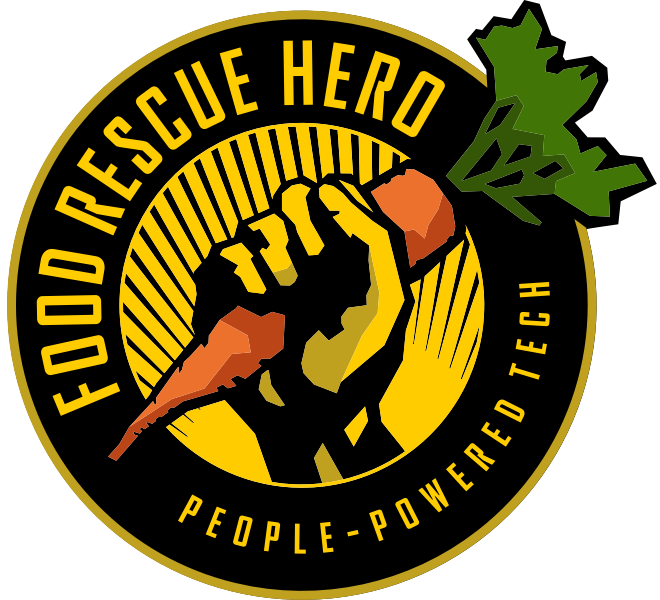At Food Rescue Hero, data isn’t just numbers on a spreadsheet; it’s the compass guiding us towards a more sustainable future–right now. Today we’ll delve into the significance of data, particularly in shedding light on our environmental impact and greenhouse gas emissions, and how it fuels our commitment to sustainability.
The Heart of Sustainability: Understanding Our Impact
In an era defined by climate change, understanding and mitigating our carbon footprint is a step all organizations, businesses, and corporations need to take in their day-to-day operations. While the very act of food rescue is, in part, intended to mitigate carbon emissions, Food Rescue Hero recognizes that the urgency of this challenge demands that we constantly strive to hone operations in order to increase our collective impact. The data we collect serves as our guiding light in navigating these complex issues.
One particular data point most recently researched by our team is the “breakeven mileage.” By calculating the precise CO2eq impact of each unique food rescue, we can understand and verify the net benefit of food rescue through comparing CO2 emissions spent transporting rescued food vs. CO2 emissions mitigated by rescuing the food.
Measuring the CO2 Offset of Food Rescue
At the end of 2023, Food Rescue Hero unveiled a groundbreaking measure within the platform that calculates the tangible environmental benefits of each individual food rescue completed within our Network, based on its makeup of foods.
Previously, all food recovery organizations could use a generic calculation based on averages to estimate their environmental impact – but it wasn’t specific to the organization or actual food being rescued.
Now, when a Food Rescue Hero Network partner looks at their CO2eq impact and the entire Network impact, they’re seeing actual specific data for every piece of food their volunteers and staff have recovered. This provides critical information for funders, volunteers, supporters and operations teams to evaluate the intersection of effort and impact.
Deciphering the Net Benefit: The Breakeven Mileage
Using this more precise data, we are able to gauge the net benefit of our food rescue operations and identify the “breakeven mileage”. This metric–calculated by comparing the CO2 emissions mitigated from rescuing food to those generated by our volunteers’ mileage–provides invaluable insight into our environmental impact.
For every pound of food rescued, we’ve determined that our vehicles would need to travel approximately 1.55 miles to reach net zero CO2eq emissions. Any distance (per pound) less than this has a positive effect on mitigating harmful greenhouse gasses!
We derive this number by calculating the CO2eq offset by a pound of the average rescue (our proprietary “rescue mix”) against the emissions per mile for the average vehicle (about 400 grams of CO2). To account for the potential need to double back after completing a rescue, we double the emissions associated with each rescue route. Different types of food have different impacts, but on average, each rescue completed within the Food Rescue Hero Network yields a net benefit of 270 lbs of carbon offset.
This revelation isn’t just a number; it’s a game-changer in our quest for sustainability, empowering us to optimize our operations and minimize our carbon footprint.
Empowering Partner Organizations to Make Data-Driven Decisions: A Collective Commitment to Sustainability
Our commitment to data-driven sustainability doesn’t end with insight into the network impact. We believe in sharing our insights and empowering others to make a difference. That’s why we provide access to data and reporting for every food recovery organization partner in the Food Rescue Hero Network. By understanding and communicating their impact, our partners are empowered to amplify their efforts and drive positive change in their communities.
Armed with this knowledge, each of our partners no longer needs to make educated guesses; they’re making data-driven decisions that have a tangible impact on the planet. And these strategic data-driven plans don’t just focus on reducing emissions–they also provide solid proof supporting how each organization can work towards feeding their community more impactfully while being good stewards of our environment.
Through our robust data analytics, Food Rescue Hero is also able to track and monitor the transit time of rescued food, providing reassurance to stakeholders that every delivery is made promptly and safely.
This level of transparency not only strengthens trust in operations, but also underscores fundamental dedication to safety and quality assurance.

Understanding recurring vs. one-time rescues also enables Food Rescue Hero Network partners to identify potential donors and recipients that would be good candidates for recurring rescues. By establishing ongoing partnerships with these stakeholders, they can streamline operations, reduce operational overhead, and maximize the impact of their food rescue efforts.
Food Rescue Hero’s journey towards sustainability is a collective effort fueled by the passion and dedication of every member of our Network. From New Jersey to California, we’re united by a shared vision: to leave behind a planet that’s healthier, greener, and more vibrant than we found it. And with data as our ally, we’re confident that we’re not just dreaming of a better world—we’re actively building it, one rescue at a time.
Join Us on the Journey: Together, We Can Make a Difference
As we continue to harness the power of data to drive sustainable impact, we invite you to join us on this journey. Whether you’re part of the Food Rescue Hero Network, an active supporter of our and our partners’ operations, or a food recovery organization doing similar work, your support and engagement in this work is invaluable in propelling us towards our shared goal: a world where sustainability isn’t just a goal but a reality.






